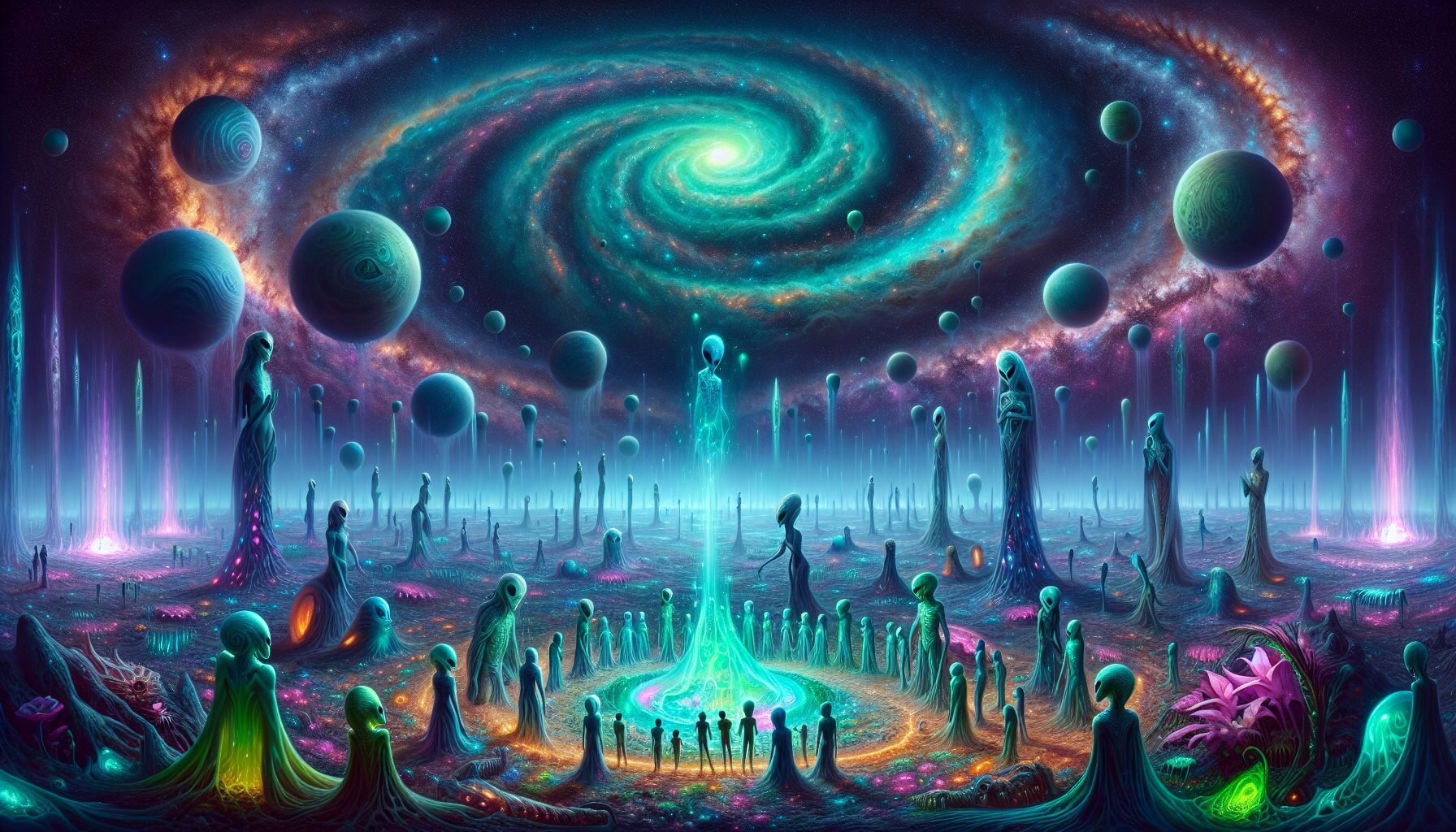Alien Funerals: Speculations on Ritual Beyond Earth
Humanity has long been fascinated by the possibility of alien life. From science fiction stories to serious scientific endeavors, the question of whether we’re alone in the universe has captivated our collective imagination. But beyond discovering alien life, another intriguing question emerges: How might extraterrestrial beings mourn their dead? In this article, we’ll delve into the speculative yet fascinating topic of alien funerals and explore how such rituals might differ from or resemble those of Earth.
Cultural and Biological Influences
Just as Earth’s funeral rites are shaped by culture and biology, so too might alien funerals be influenced by these factors. Diverse human societies have developed distinct customs around death based on various religious beliefs, environmental conditions, and social structures. When considering alien funerals, it is important to account for these dynamics:
- Biological Factors: What form might alien life take? The biology of a species could determine their lifespan, method of reproduction, and corporeal composition—all of which would influence how they might treat their dead.
- Cultural Complexity: The level of technological and cultural advancement might dictate the complexity of alien memorial practices. A more advanced civilization might administer elaborate ceremonial rites, whereas a simpler one might employ more basic rituals.
- Environmental Context: The natural environment of an alien planet could shape funeral practices. For example, a planet covered in water might lead to water-based funerals, while a barren, rocky landscape could involve burial or cremation akin to Earth’s.
Hypothetical Alien Funeral Practices
With the above considerations in mind, let us explore some speculative funeral practices that alien civilizations might employ:
Skyward Send-Offs
In an advanced alien civilization, the dead might be sent off into space as part of a celestial burial tradition. This could serve both as a means of honoring the deceased and as a practical method of conserving planetary resources. The body might be launched into orbit, becoming a part of the cosmos they once observed. Intriguingly, this custom could mirror concepts explored in notable science fiction works like “Hyperion Cantos” by Dan Simmons, where space burials are part of the cultural landscape.
Energy Reclamation and Transformation
For species with the ability to harness and transform energy, funerals might focus on the reclamation and transformation of a being’s energy essence. Such practices would align with the principle of conservation, reincorporating life-force back into the community or environment. Arthur C. Clarke hinted at this idea in his novel “Childhood’s End,” where evolved beings transcend physical form, becoming beings of pure energy.
Collective Remembrance Sculptures
An artfully communal approach might be employed by socially oriented alien species, using the act of remembrance to foster unity. Deceased individuals might become part of large, evolving art installations, crafted to hold memories and interact indirectly with the living. A similar artistic fusion is found in human practices, such as the Dia de los Muertos in Mexican culture, where artistic expressions play a key role in memoriam.
“For death is no more than a turning of us over from time to eternity.” – William Penn
Potential Philosophical Implications
Speculating on alien funerals not only prompts us to contemplate extraterrestrial life but also challenges our assumptions about life and death itself. Could alien funerals reveal universality among sentient beings regarding loss and remembrance, or highlight stark cultural divergences?
- Universal Themes: The drive to memorialize and honor those who have passed may be a shared trait among intelligent species. It may embody an inherent desire to preserve the connections that shape societies.
- Existential Questions: Alien funerals could bring into focus the relativity of existential beliefs, perhaps differing vastly from Earth’s theologies. Such an understanding might enrich our own perceptions of mortality.
Encountering an Alien Burial Ceremony
Imagining a scenario where humans observe an alien funeral could force us to reevaluate our conceptual frameworks for tradition, ritual, and spiritual practice. It might also spur discussions about the sanctity of life as understood among varying intelligences, an idea eloquently expressed by Carl Sagan in his work “The Cosmos.”
If we find that our rituals share common threads with those of extraterrestrial beings, such similarities could lead to a newfound appreciation of our bio-social connections across planets. Alternatively, profound differences might provide insights into the diverse concepts of existence.
Conclusion: The Infinite Possibilities
Until the day comes when we make contact with alien civilizations—whether through technology or a stroke of serendipity—our visions of alien funerals will remain within the realm of speculation. However, exploring such possibilities stirs our imagination and fosters an open-minded curiosity about life beyond Earth.
As humanity continues to search the stars, let us not only seek to uncover life but also embrace the infinite narratives that might accompany it, acknowledging that the story of life in the universe is a tale that remains unwritten.

Comments